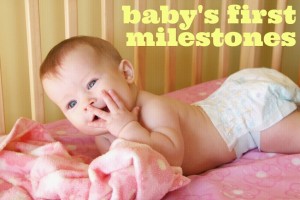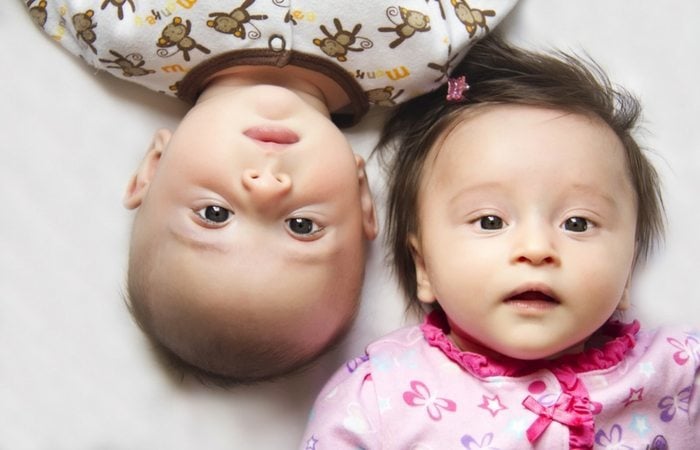Last updated on June 16th, 2024 at 03:55 pm

We may think at first that our twins abilities will be the same since, well… they are the same age. We assume they will walk at the same time, learn to ride bikes at the same time and so on. But this isn’t always the case, as I myself have experienced with my own twins.
My Twin B was lagging in meeting his milestones. It was more obvious since we had his twin brother as a comparison. At first there was a two week difference. Then 3, 4, 5, filially about a 9 month difference between the two of them. During this time we had the help of therapists monitoring them both to validate our concerns as the delays as well.
Before I was a parent I used to think that milestones were silly. I viewed them as a way for parents to brag that their child did something “2 weeks before they were supposed to.” I hated this type of competitiveness seen in mom’s. But the REAL reason the milestones are there are to help the parents with kids who may be falling behind; not to give any mother bragging rights.
So here are some milestones to help you if you are wondering how your baby is developing. Do not stick to these milestones as a rule, but use them as a guideline. Bacause remember, they have their own personalities and abilities. Just because they are “slower” to achieve some things doesn’t always mean there is cause for alarm.
Between 3-4 Months:
- Holds head steady and unsupported
- Raise head and chest when lying on stomach
- Make jerky, quivering arm movements
- Bring hands near face
- Open and shut hands
- Grab and shake toys
- Follow moving object with eyes
- Interested in watching faces closely
- Pushes down on legs when feet are on a firm surface
- Begins to babble and to imitate some sounds
- Recognize some sounds, including parents’ voices
- Smile at the sound of parents’ voices
Between 6-7 months:
- Rolls over both ways (stomach to back and back to stomach)
- When standing supports weight on legs and may bounce
- Begins to sit without support
- Transfers objects from one hand to the other
- Explores objects with hands and mouth
- Uses voice to express joy and displeasure
- Responds to own name
- Babbles the same sounds repeatedly
- Enjoys playing peek-a-boo
- Likes to see self in the mirror
- Tries to get things out of reach
Between 9-10 months:
- Sits without assistance
- Get to the sitting position by themselves
- Is crawing
- Pulls to stand up
- Can stand holding onto something sturdy
- Begins to pick up small objects with a pincher grasp (between thumb and index finger)
- Points at things
- Understands “no”
- May be afraid of strangers
- May be clingy with familiar adults
- Babbles “mama, dada“
By Age One Year:
- Gets into hands-and-knees position
- Crawls
- Walk holding onto furniture, and possibly a few steps without support
- Picks up small objects with a pincher grasp (between thumb and index finger)
- Tries to imitate words
- Use exclamations, such as “uh-oh!”
- Respond to “no”
- Responds to simple verbal requests like pick up toy, give mama spoon.
- Use simple gestures, such as shaking head “no” and waving bye-bye
- Explore objects in many ways (shaking, banging, throwing, dropping)
- Begin to use objects correctly (drinking from cup, brushing hair)
- Find hidden objects easily
- Look at correct picture when an image is named
For more details and printouts see the CDC Development Milestones.
Find Preschool Milestones here.







